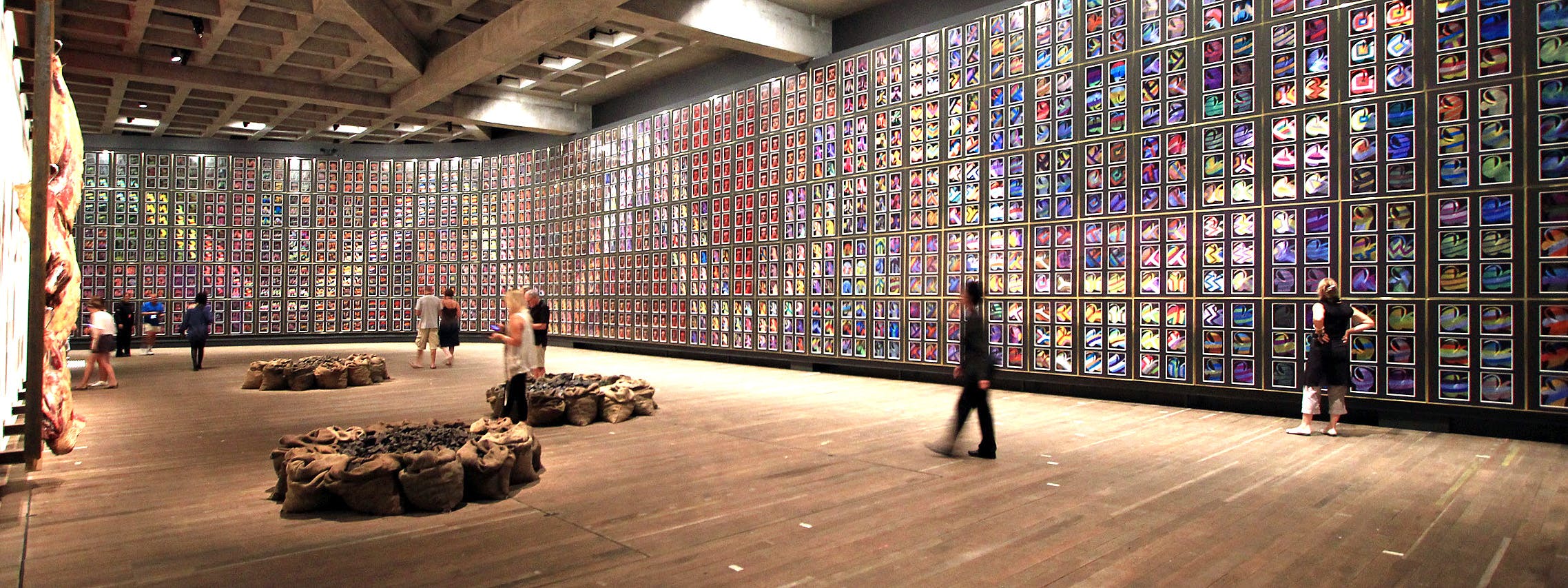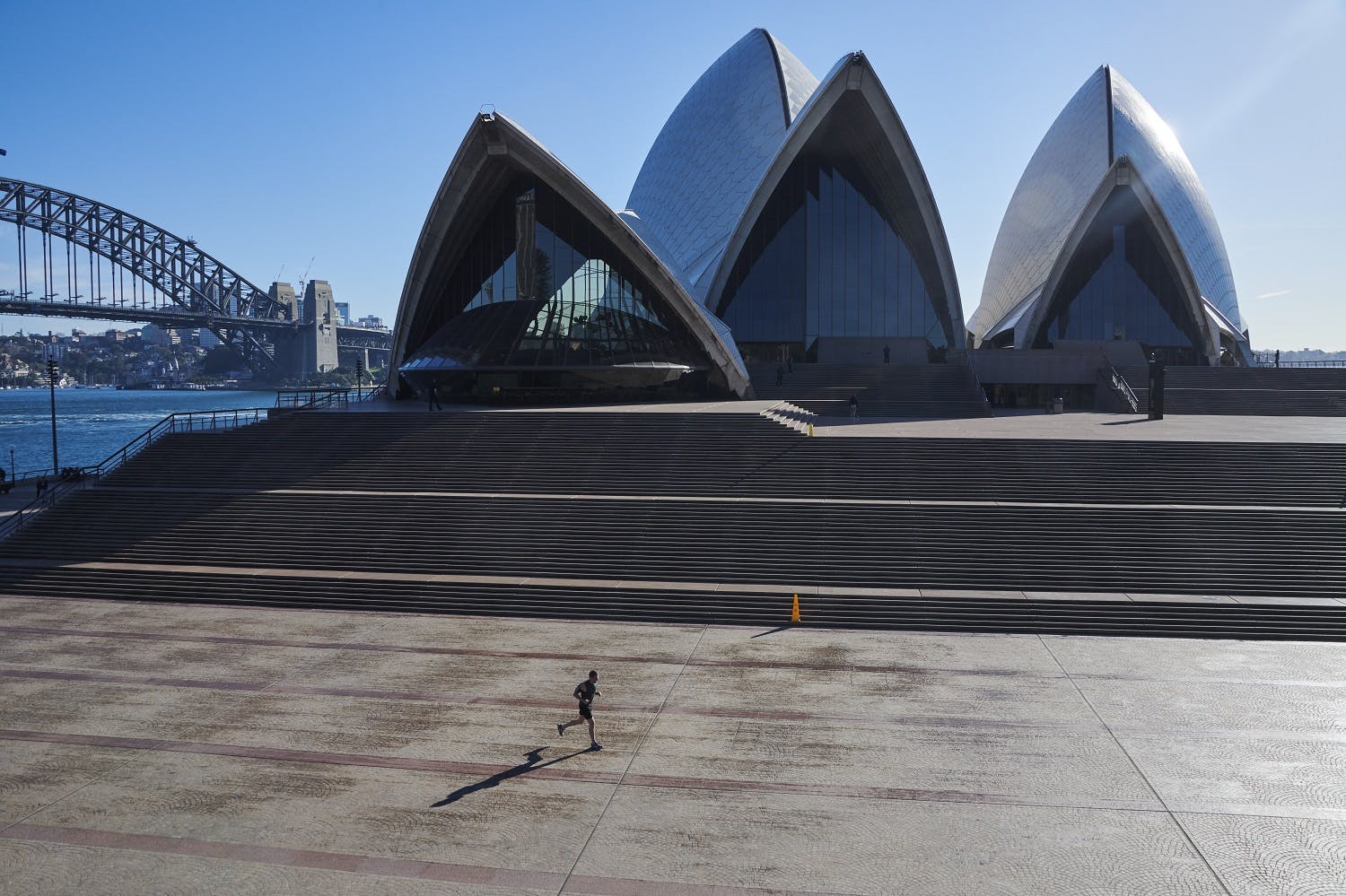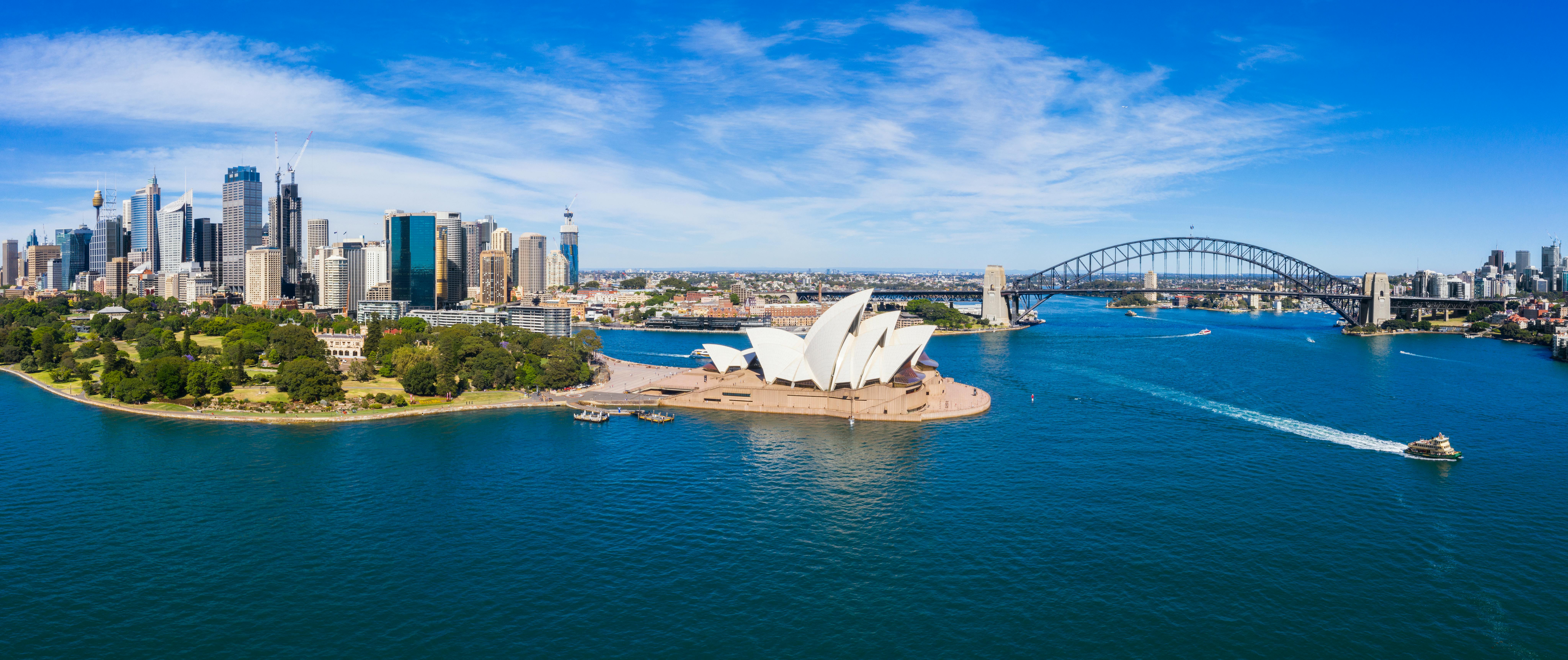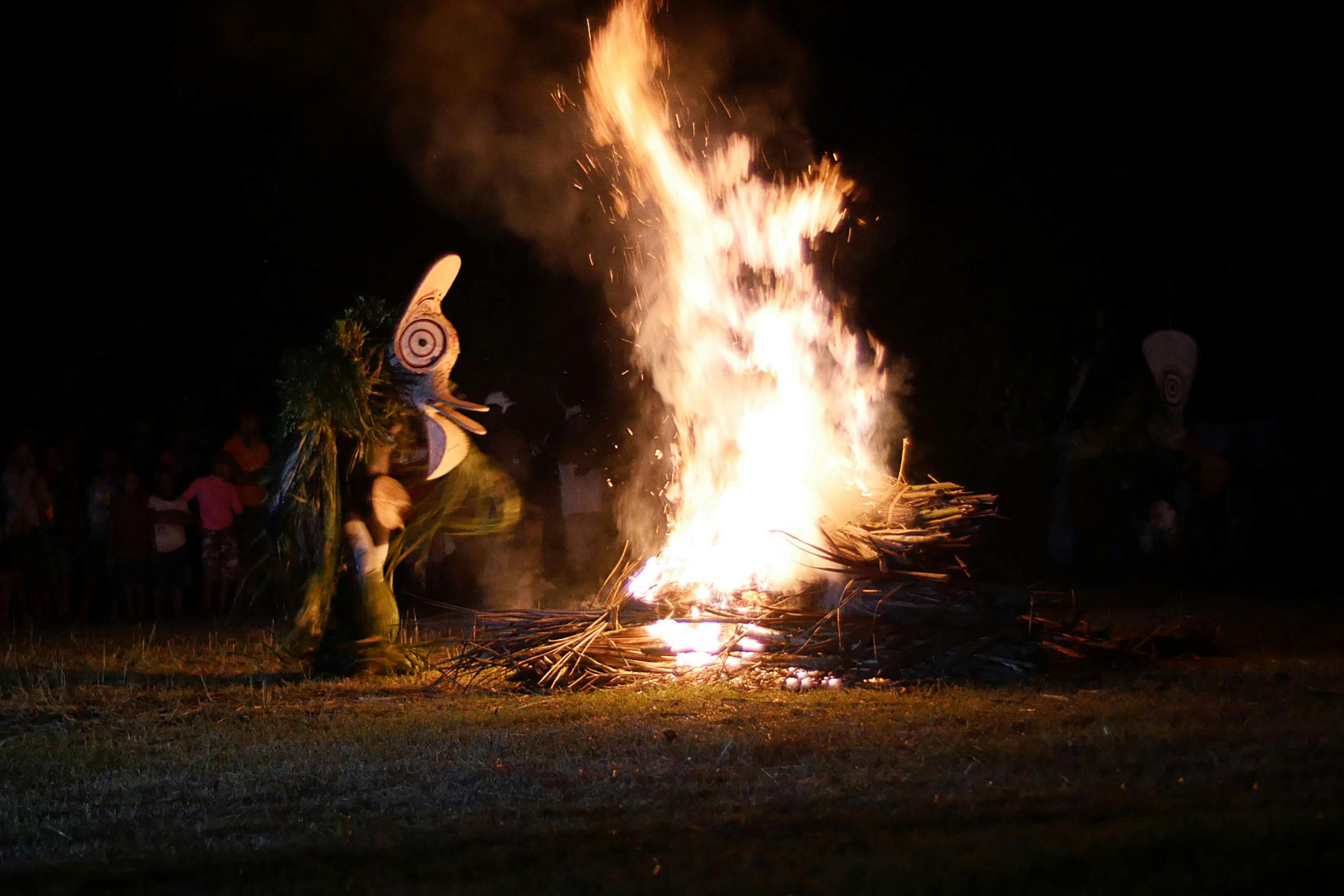Tasmanian Museum Is Not Your Average Art Gallery. Prepare to Be Puzzled, Even Repelled
It’s hard to put a label on the boundary-pushing Museum of Old and New Art in Australia’s Tasmania. Its owner describes it as a subversive adult Disneyland. Others might describe it as sexual, surreal and shocking.
Before I visited MONA in 2024, I read everything about it I could find. I knew that the museum, known for its provocative sex and death gallery, famously has a machine that eliminates waste. That there are no guided tours. You can experience the 300-piece collection of modern art and antiquities fully only by downloading an app.
Even so, I wasn’t quite prepared for the emotional response that the collection, both delightful and disturbing, demands.
One thing that’s indisputable: No trip to Hobart, Tasmania’s compact capital city, would be complete without visiting Australia’s largest private museum, one of the most controversial in the world.
Just be sure to pack a sense of humor.
Nothing at MONA is quite what it seems
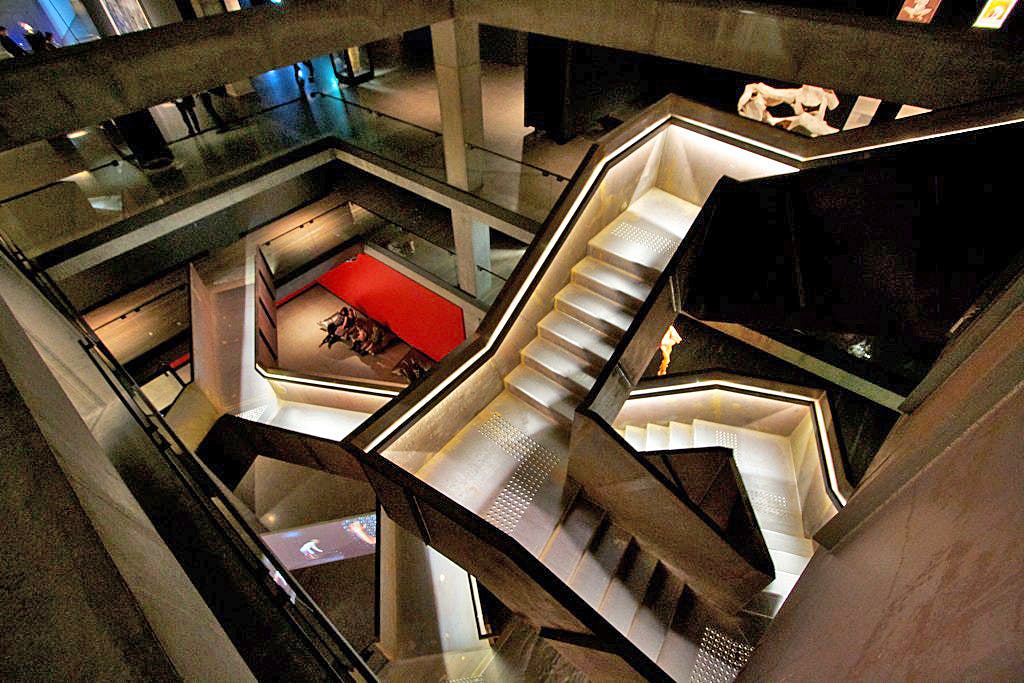
A 25-minute ferry ride in the Posh Pit, a VIP lounge I booked for this trip on the River Derwent, set the tone for my visit. A cheerful woman greeted me with, “Hello lovely, how you going?” (How you going, sometimes with an “are” before “you,” is an Australian thing.) Next thing I knew I was drinking bubbly and nibbling on canapes. Never mind that it was 10 in the morning. “Show ’em who’s posh,” one of the cheeky signs in the lounge suggested.
Walking into MONA’s subterranean entrance, I immediately spied a bar promising “Cocktails, Pizzas, Emptiness” and, at the start of the sex and death gallery, an “Adult Content” warning. Not your typical museum signage. But nothing about this place is typical, including “Snake,” by Sydney Nolan, pictured at the top of this page, a 1,620-piece panel that so impressed museum owner David Walsh that he modified the structure of the building to accommodate it. (Photo at top: Wikimedia Commons/jeffowenphotos )
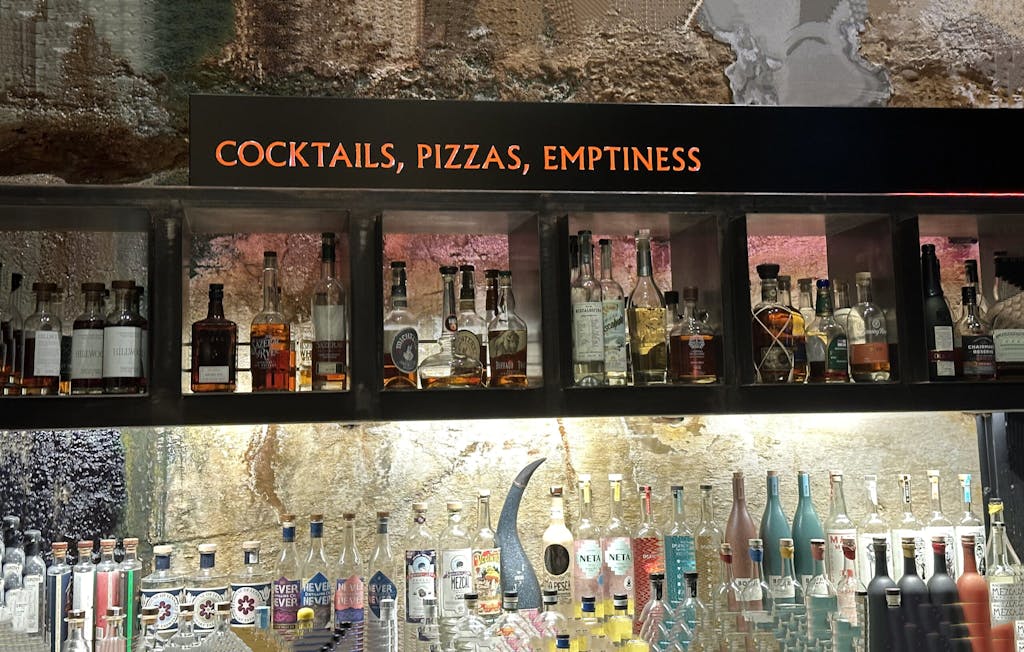
The artwork at MONA isn’t subtle, and many of the pieces are not what they seem at first glance. For example, what looks like a colorful box of fancy chocolates is actually part of Stephen Shanabrook’s “Morgue” series – impressions of wounds from dead bodies cast in dark chocolate.
Another what-you-see-is-not-what-you-get piece features a photograph of a chef next to the words “Two Bacon Cheeseburgers, French Fries, Onion Rings, Cole Slaw, Fried Okra, A Pint of Rocky Road Ice Cream, A Quart of Milk and Two Diet Cokes.” I’m a Diet Coke drinker, and it made me laugh out loud until I learned it was the execution-eve meal for a man on death row in Texas.
Perhaps the most famous composition is Cloaca Professional, a machine that is “fed” daily at 11 a.m. and 3:45 p.m. It eliminates at 2 p.m. daily, reflecting the artist’s opinion of much of modern art.
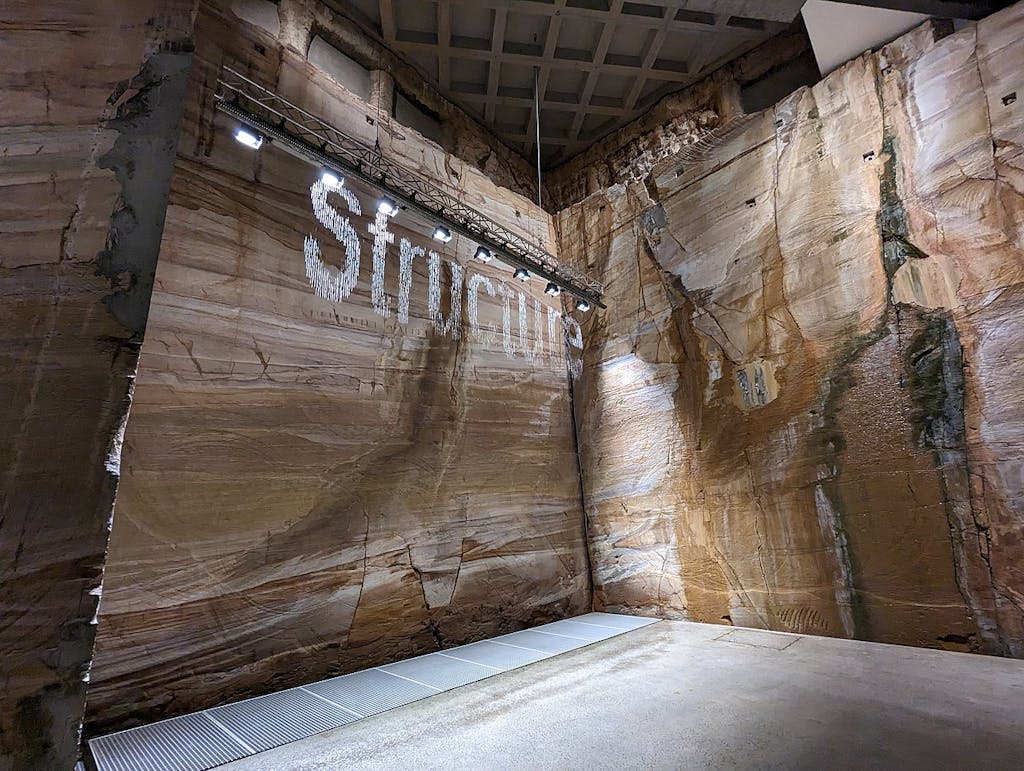
My favorite work by far was bit.fall, an electronic waterfall that randomly displays words downloaded in real time from Google’s Australian news headlines. Artist Julius Popp calls it a “metaphor for the incessant flood of information we are exposed to.” Some of the words on display when I was there: Kate, surgery, evacuation, Uber, people and loss. It’s hard to take your eyes off it.
There’s an app for that
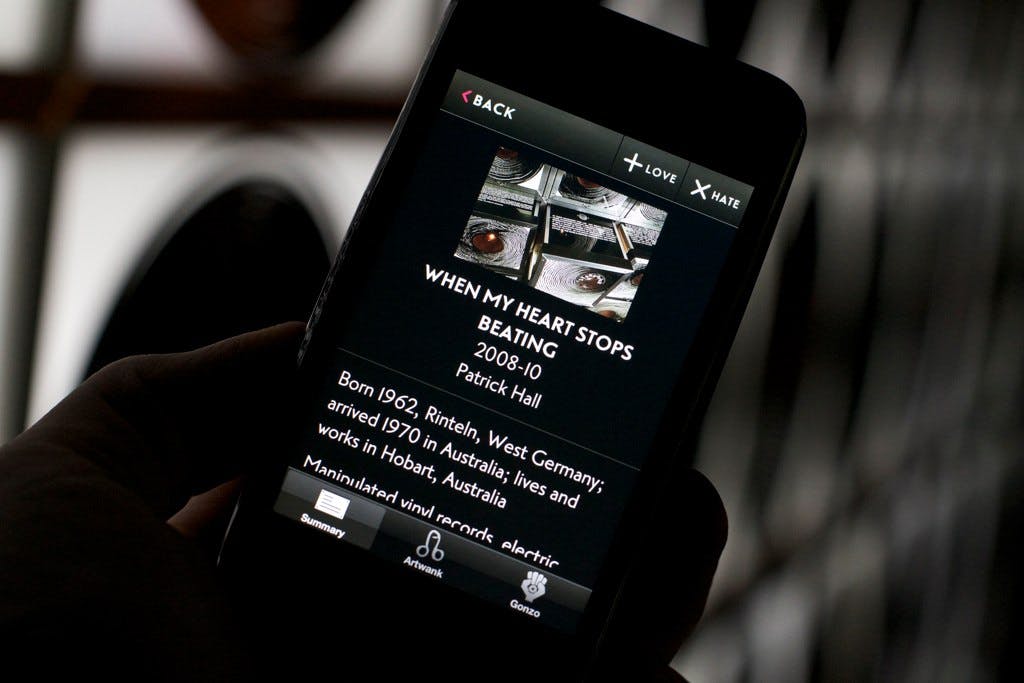
No guides are allowed in MONA, and none of the artwork is labeled so it’s critical to download the O app to your phone ahead of your visit. I wasn’t sure I would like engaging art through an app, but I loved it.
With the app, you can read a short summary about the art or dive deeper by tapping on Art Wank. Gonzo gets you commentary written by MONA curators and museum owner David Walsh, a gambling magnate. Using earphones, you can listen to artist interviews.
One of my favorite bits is the real-time commentary from other visitors. Those thoughts pop up on the app as you walk by each piece: “Love, love,” “Creepy but not getting it” and “Disturbing but can’t look away.”
At an ancient Egyptian coffin, one observer wrote: “Give it back to the people of Egypt,” and for “Untitled (White Library),” a collection of 5,000 white books and newspapers (pictured at top; photo by Dicklyon/Wikimedia Commons), a museum-goer posted: “Waste of paper. Watch out for Greta Thunberg.”
MONA isn’t just a museum. It’s also a compound that includes bars, restaurants, a winery, a brewery and live music. It’s a good place to sample local delicacies such as wallaby tartare, pulled wild boar and venison hummus. The museum’s saucy sense of humor extends to the menu listings: a pan-roasted Tasmanian wild venison dish, for example, is called “Eat the Problem.”
After your art fix, wine, dine, stay and play.
If you go

A visit to MONA in the Posh Pit is a featured Silversea shore excursion (look for “MONA — In Style). Ferries depart from Brooke Street Pier, an ideal jumping off point to explore Hobart, or “Slowbart,” as the locals call it.
Tickets for the Hop-on Hop-off Red Decker bus tours are sold at the ferry building. The 90-minute tour has 20 stops and provides a nice overview of the city, built by British convicts and established in 1804.
If you’re lucky enough to visit Hobart on a Saturday, the Salamanca Market, just around the corner from Brooke Street Pier, offers Tasmania’s largest selection of locally made products. There are more than 300 stalls, including food vendors selling favorites such as scallop pie and wallaby wraps. Open 8:30 a.m. to 3 p.m.
Salamanca and Battery Point, two of Hobart’s loveliest neighborhoods, are walkable from Brooke Street Pier. They are also stops on the Red Decker bus tour. Shops, galleries, cafes and restaurants are in Salamanca’s Georgian sandstone warehouses, which stored whale oil in the 1800s. The posh Battery Point, the city’s oldest neighborhood, is architectural eye candy that boasts small, colorful homes built for shipyard workers in the 1830s and 1840s.



